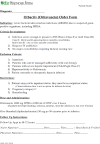Improved economic and clinical outcomes with oritavancin versus a comparator group for treatment of acute bacterial skin and skin structure infections in a community hospital
- PMID: 33735185
- PMCID: PMC7971560
- DOI: 10.1371/journal.pone.0248129
Improved economic and clinical outcomes with oritavancin versus a comparator group for treatment of acute bacterial skin and skin structure infections in a community hospital
Abstract
Background: Oritavancin is a lipoglycopeptide antibiotic with in vitro bactericidal activity against gram-positive pathogens indicated for use in adults with acute bacterial skin and skin structure infections (ABSSSI). Its concentration-dependent activity and prolonged half-life provide a convenient single-dose alternative to multi-dose daily therapies for ABSSSI. This retrospective cohort study was conducted to quantify the clinical and economic advantages of using oritavancin compared to other antibiotic agents that have been historically effective for ABSSSI.
Methods: Seventy-nine patients received oritavancin who had failed previous outpatient antibiotic therapy (OPAT) for cellulitis or abscess and were subsequently readmitted to the hospital as an inpatient between 2016 and 2018. These patients were compared to a cohort of 28 patients receiving other antibiotics following OPAT failure and subsequent hospitalization for these two infection types. The primary clinical end point was average length of stay (aLOS) and secondary endpoints included readmission rates for the same indication at 30 and 90 days after discharge and the average hospital cost (aHC).
Results: A total of 107 patients were hospitalized for treatment of cellulitis or abscess. Demographic characteristics of both the oritavancin and comparator groups were similar except for the presence of diabetes. The primary clinical endpoint showed a non-significant decrease in aLOS between the oritavancin group versus comparator (2.12 days versus 2.59 days; p = 0.097). The secondary endpoints revealed lower readmission rates associated with oritavancin treatment at 30 and 90 days; the average hospital cost was 5.9% lower for patients that received oritavancin.
Conclusion: The results of this study demonstrate that oritavancin provides not only a single-dose alternative to multi-day therapies for skin and skin structure infections, but also a clinical and economic advantage compared to other antibiotic agents.
Conflict of interest statement
DeTar Healthcare System provided support in the form of a salary for author KS. Miguel Sierra-Hoffman M.D. is a member of the speaker bureau for Melinta Therapeutics. This does not alter our adherence to PLOS ONE policies on sharing data and materials.
Figures
References
-
- The Patient Protection and Affordable Care Act (PPACA), Pub. L. No. 111–148, 124 Stat. 119. 2010.
Publication types
MeSH terms
Substances
LinkOut - more resources
Full Text Sources
Other Literature Sources
Medical



